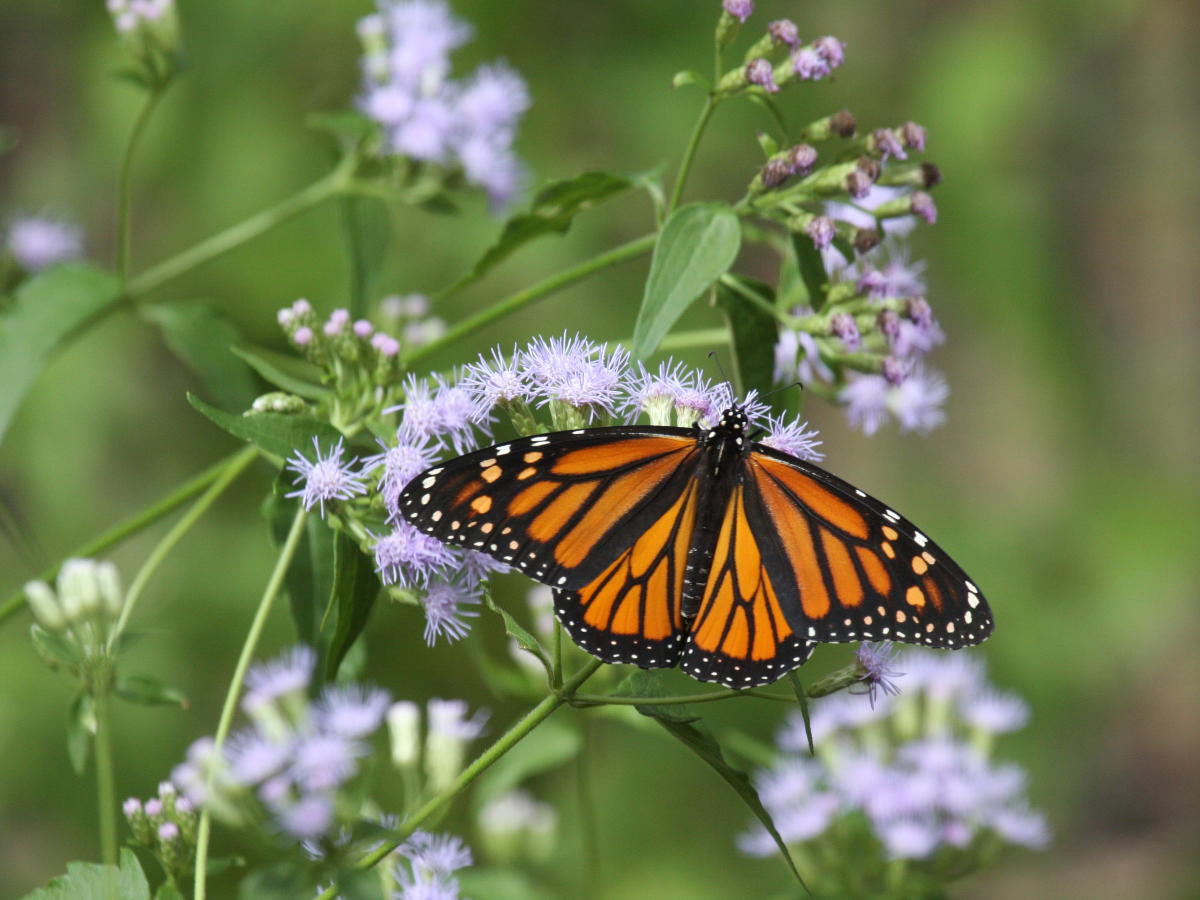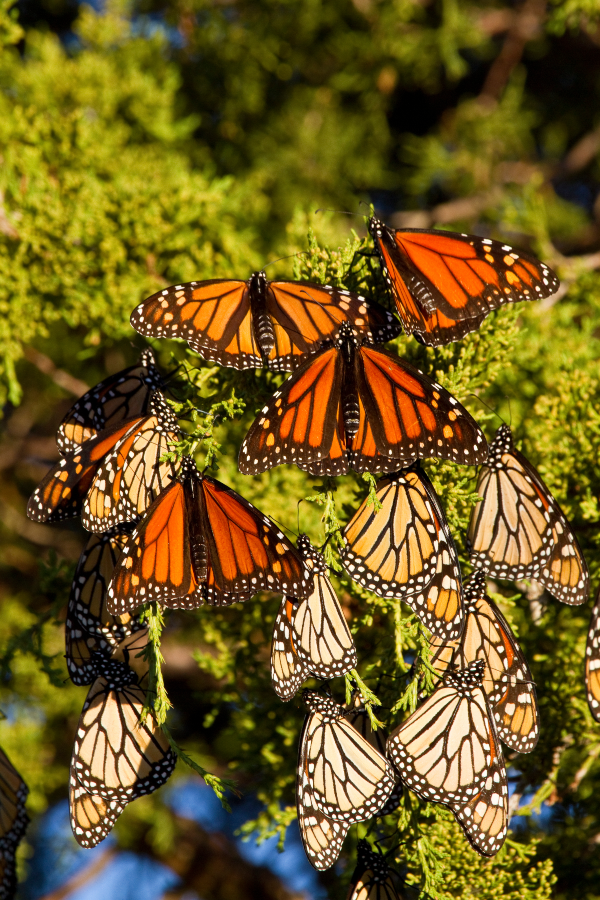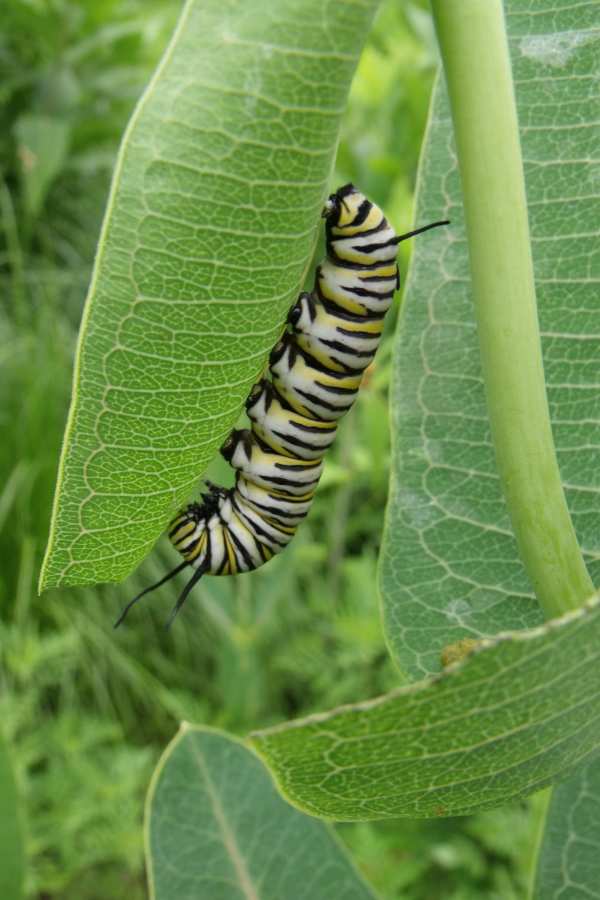
Tiny Miracles on Wings
What I experienced as a “miracle” happened many years ago when I was eight, playing outside after dinner among a small grove of hackberry trees. That fall evening I witnessed a miraculous transformation as the last rays of sunlight lit up not leaves, but thousands upon thousands of trembling golden-orange triangles that adorned the trees and bent down smaller limbs. I was awestruck. What miracle created this spectacle? I couldn’t imagine. Later I learned that my “miracle” was a monarch butterfly roosting site. I was fortunate indeed to see thousands of monarchs as they migrated to Mexico for the winter—and stopped off in my backyard for the night.
Scientists have long been mystified and intrigued by monarch butterflies. They’re one of the very few migratory insects on earth, and their overwintering sites in Mexico weren’t discovered until 1975. Monarchs fly south through the United States using several flyways, then merge into a single flyway as they pass through Central Texas. What’s really amazing is that these tiny insects know the way to their overwintering sites so many thousands of miles away, even though they’ve never been to Mexico before! Once spring arrives, successive generations of adult monarchs hatch out and journey north towards the United States and Canada, where the cycle begins again.

I wonder if my grandchildren will get a chance to see migrating monarchs? In recent years their numbers have plummeted. The reasons are many and are still being researched, but loss of native grassland habitats and excessive pesticide use on croplands are most likely to blame. In addition, high altitude overwintering sites in Central Mexican forests are very vulnerable to destruction. Even though several preserves are protected, local populations needing wood for fuel have cut down many trees which would otherwise act as a buffer against harsh winters that can decimate butterfly populations.
Monarch butterflies are now migrating through Central Texas, but I worry they won’t find the milkweed plants their hungry caterpillars depend on for food. Did we get enough rain? Is development destroying too much habitat here? I take my grandchildren to a natural area to look for milkweed plants, and we finally find a patch among the wildflowers. Success! We also watch as two migrating monarchs search for nectar among the nearby wildflowers to fuel their long journey north.

At home, I connect to an online community of monarch lovers through the Journey North website (www.journeynorth.org). All over North America, monarch enthusiasts are outside watching and reporting any monarch sightings. Using their reports, Journey North maps those sightings and I get to glimpse monarch migration from home with a cadre of citizen scientists and nature lovers.
Last fall, Estela Romero, a native of Michoacán, Mexico, wrote on the Journey North website, “Our indigenous groups show deep understanding of the relationship between life and death. Monarchs are the connection of [sic] this mystic relationship. . .” The people of Michoacán have long celebrated the arrival of monarch butterflies each fall as it coincides with the Día de Los Muertos (Day of the Dead)—an annual celebration where families gather to honor and remember deceased loved ones and support them on their spiritual journey.
Even though I come from a different culture, I too celebrate when I see monarch butterflies. They connect me to my past, to the monarch community, and to the simple wonder of a tiny miracle on wings.

Ann Miller was on staff with the Texas Parks and Wildlife Department for many years before becoming a certified Interpretive Guide and working as an Interpretive Ranger at Yellowstone National Park. Since joining our Interpretive Insights team, she has assisted with project research and planning using her extensive experience both as a frontline interpreter, and also as a middle school science teacher.
